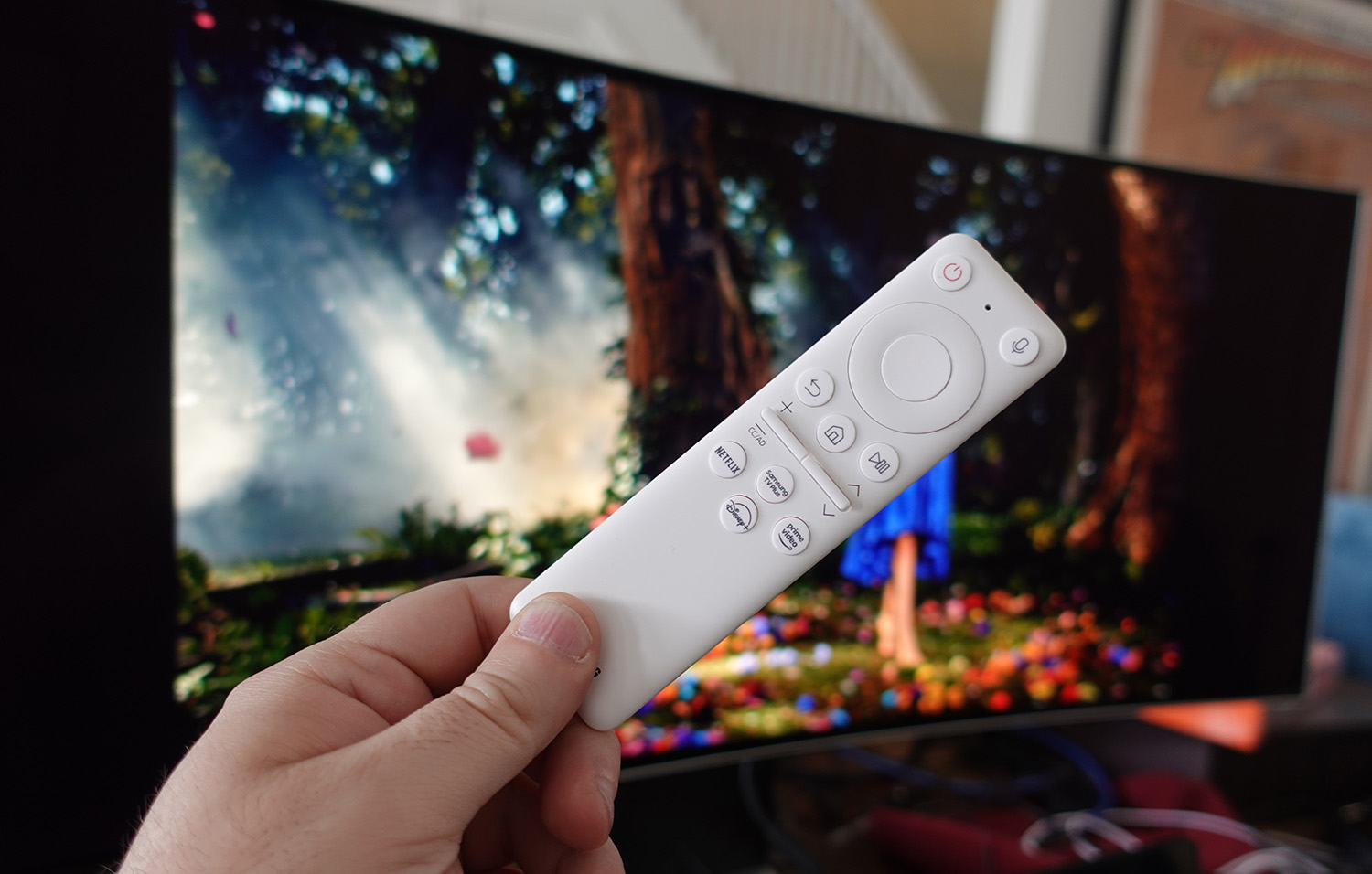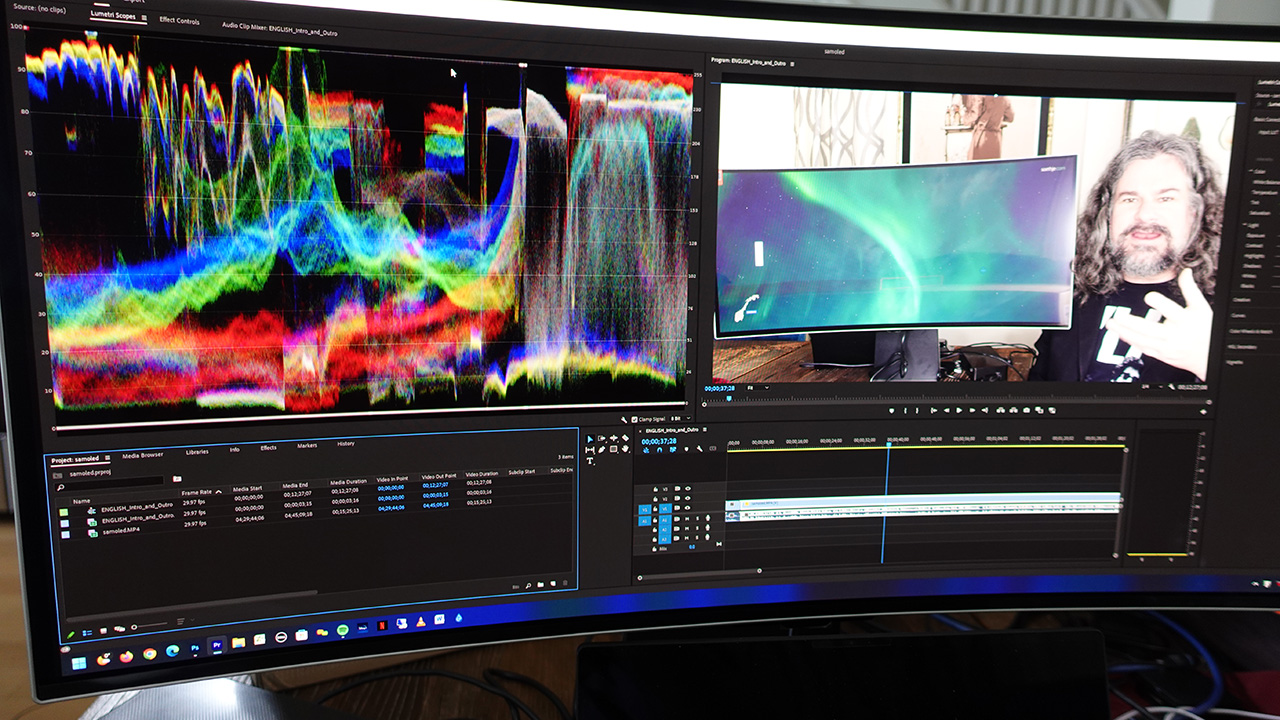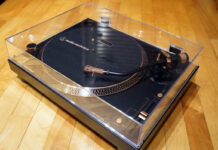 What do you want from a monitor? Is it to simply display your information, or to make you feel like you’ve somehow fallen into what’s on screen, whether you’re writing a report, watching the latest blockbuster, or blasting away in your favourite game. Thanks to cutting edge display technology, a sleek form factor, and blistering specs, the Samsung 34″ Odyssey G8 OLED gaming monitor promises to be the ultimate monitor for gamers or power users alike. Does it live up to the hype? Let’s find out!
What do you want from a monitor? Is it to simply display your information, or to make you feel like you’ve somehow fallen into what’s on screen, whether you’re writing a report, watching the latest blockbuster, or blasting away in your favourite game. Thanks to cutting edge display technology, a sleek form factor, and blistering specs, the Samsung 34″ Odyssey G8 OLED gaming monitor promises to be the ultimate monitor for gamers or power users alike. Does it live up to the hype? Let’s find out!
Specifications of the Samsung 34″ Odyssey G8 OLED gaming monitor
- Screen type: OLED
- Size: 34” diagonal (800.1mm x 337.1mm)
- Resolution/Aspect Ratio: 3440×1440, 21:9
- Max refresh rate: 175hz
- Curvature: 1800R
- Contrast: 1,000,000:1
- Response: 0.1ms
- Inputs: Mini-Display Port, Micro HDMI, USB-C ports (x2)
- Additional features: DisplayHDR True Black, AMD FreeSync Premium
- TV features: Smart TV interface, remote control
Unboxing the Samsung Odyssey G8 OLED gaming monitor
Given its vast 21:9 aspect wingspan, the box for the monitor is suitably large yet somehow seems to use the internal space efficiently. On top of the Styrofoam packing is a fairly massive power brick with removable cord, a mini-Display to Display port cable, a sleek remote control, an optional VESA adapter, and a functional if a bit flimsy table stand that needs a small amount of assembly. For a monitor of this style you may consider a more robust articulated arm that mates with the included mount, but the in-box solution is perfectly fine if a bit wobbly.
The set itself is a thing of stunning beauty, especially when situated right in the sweet spot in front. While it takes some getting used to for regular PC work, the ability to have multiple windows open over the entire span makes for quite a workspace. Watching 21:9 video content was where things truly shone, as the immersion of the 1800R screen made you feel at times like you were falling right into the picture.
Setting up the Samsung 34″ Odyssey G8 OLED gaming monitor
 Unlike so many monitors from the past, the Samsung Odyssey G8 borrows heavily from the more consumer friendly line from the manufacturer’s television sets. On initial power on (the power button/joystick combo is located on the back beside the inputs), you are treated to a very clear and easy to follow setup screen. You can either use a mobile app or the included remote control to connect the monitor to your local Wi-Fi. A firmware update will automatically begin to download. The opening dashboard includes the regular suite of streaming apps, and there’s even Internet TV channels that start to play right away.
Unlike so many monitors from the past, the Samsung Odyssey G8 borrows heavily from the more consumer friendly line from the manufacturer’s television sets. On initial power on (the power button/joystick combo is located on the back beside the inputs), you are treated to a very clear and easy to follow setup screen. You can either use a mobile app or the included remote control to connect the monitor to your local Wi-Fi. A firmware update will automatically begin to download. The opening dashboard includes the regular suite of streaming apps, and there’s even Internet TV channels that start to play right away.
The remote makes the picture setup a breeze as well, with the fine tuning almost exactly the same as any other Samsung television. You can even do a 20-point colour calibration if you’d like right from the menu, dialing in settings for great accuracy. This is no surprise, of course, as the divide between computer monitors and TV screens has never been more fuzzy, but it’s so wonderful to see the software solution allow for advanced setup when required, but simplifying the process for those who simply want to get up and running right away.
Picture quality of the Samsung Odyssey G8 OLED gaming monitor
 I’m spoiled with my TV watching that’s done on both a 77” and 65” OLED, so to have a computer screen use the same technology was a real treat. Even the best LCD units lack the pure blacks of OLED tech, and for everything from watching trailers to using Premiere or Photoshop the difference from my reference 4K monitor was stark.
I’m spoiled with my TV watching that’s done on both a 77” and 65” OLED, so to have a computer screen use the same technology was a real treat. Even the best LCD units lack the pure blacks of OLED tech, and for everything from watching trailers to using Premiere or Photoshop the difference from my reference 4K monitor was stark.
By connecting up my XPS 13 plus laptop I was able to both transmit an image over USB-C but also to charge the laptop at the same time, a fabulous feature that for non-gamers will make things all the more easy, especially when as in my case spare ports are at a premium.
Many of the gaming features are wasted on me as a reviewer, unfortunately, but as a movie/TV guy and general content creator I tried my best to give the monitor a bit of a workout. I had it setup in my kitchen in order to shoot the corresponding video, testing how well it worked in bright environments (all my TV sets are in light-controlled areas to maximize contrast ratio). Even with bright sunlight the colours shone, and while a darker space obviously provides a better and more accurate environment I was pleased to see how the peak brightness of the emissive technology has improved so much, especially when cranking out millions upon millions of pixels worth of data.
While I couldn’t test the 0.1ms or 175hz in any meaningful way, suffice it to say that even migrating windows on a common browser, or sliding things around on screen, lacked the smearing during movement I’ve grown used to even on high refresh LCDs. The benefit of OLED is sometimes its curse, where without the inherent lag baked into the display technology you’ll sometimes encounter judder or stuttering images on pans from lower-framerate sources. Of course for gaming this is no issue, but when playing back 24 frame films the monitor didn’t do quite as well as I would have hoped with some of these torture tests, especially as you’re sitting so close as to notice such anomalies. This isn’t unique to this monitor, and other manufacturers have a tendency to handle such artifacts a bit better than Samsung’s processing, but this is one nit that may be picked.
I hated when curved TVs were a thing when experienced from several feet away, but the advantages at monitor-size are clearly evident. The radius of the display is such that it truly does feel immersive, and while that makes for side-by-side windows to have a bit of a stretch to them, when fully engaged with the 21:9 screen it’s quite stunning. Thanks to the pure blacks of the display, even watching pillar-boxed 16:9 or even 4:9 material is terrific, with the HDR colours and super-fast response time an absolutely delight.
If you’re a console gamer this is a pretty fantastic solution for close-up viewing, but I wouldn’t be tempted to trade in a very large display if you’re sitting more than a couple feet away. This is designed to be used as a monitor, not a sit-on-the-couch-and-watch device, and while your use case may vary, its features only truly shine when viewed from the sweet-spot designated by the curvature of the display.

Sound on the Samsung 34″ Odyssey G8 OLED gaming monitor
Proving once again that this could easily work as a standalone TV, there are speakers built-in to the monitor, with volume controlled by the remote using a functional if frustrating up/down tab. The sound is pretty paltry, and if you’re investing in this kind of picture you’re going to want to augment with proper speakers, perhaps with a subwoofer. The sound is a bit worse than on most laptops, but it’s certainly acceptable if used in an office environment or just to quickly monitor a given file. Anything more and you’re going to want to augment, which will require a bit of futzing as there’s no direct audio output in order to accommodate this.
Final thoughts on the Samsung 34″ Odyssey G8 OLED gaming monitor
So, you want a dream monitor? One that’s big enough but still can fit on your desk, that has all the inputs you desire, picture quality that’s top notch, and some ridiculous specifications that would make even the most hardcore gamer drool? The Samsung 34″ Odyssey G8 OLED gaming monitor just might meet those incredibly high expectations. With a stunning display, a seductive design and tonnes of functionality, this mega monitor checks off all the boxes, and easily could be the ultimate screen whether you’re a massive gamer or simply someone focused on having the best screen to look at while being productive, being entertained, or simply being lost in images displayed on this big, beautiful screen.
You can shop the Samsung 34″ Odyssey G8 OLED gaming monitor today at Best Buy.



